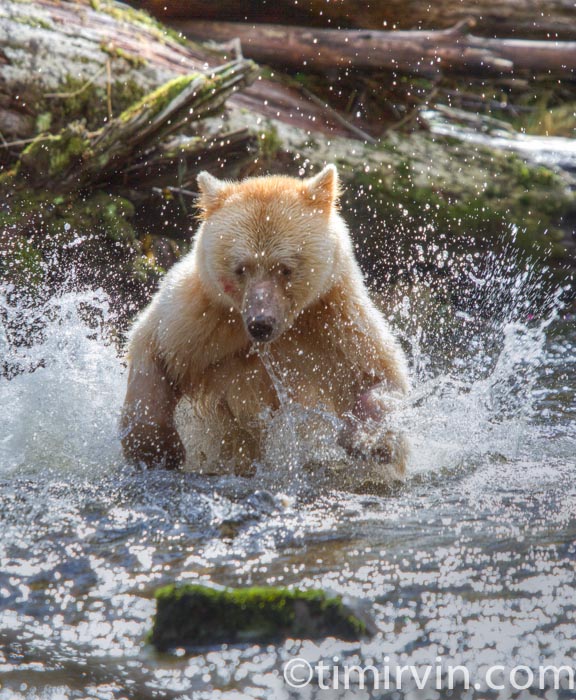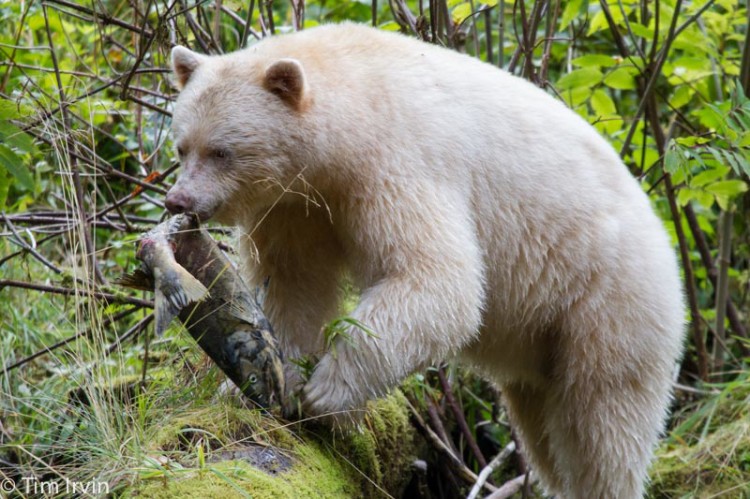Kermode Bear. Our next chase

POS 54:06.925N 130:18.397W Text below   The rare Spirit Bear is known locally by several names;-Kermode Bear, named after Francis Kermodei, former director of the Royal B.C. Museum. This rare White Bear is actually a Black Bear! Scientists are actively studying this rare genetic trait that is possibly due to a recessive gene, or could be due to a result of a concentration of gene in a given area. The Spirit Bear is not an albino. Scientists estimate there are 1,200 black and white Kermode bears in the coast area that stretches from around the northern tip of Vancouver Island northwards to the Alaska panhandle. On Gribbell Island, up to 30 per cent of the bears can be white while on the larger Princess Royal Island, about 10 per cent have the white coat. Many sightings are reported around the Terrace area, making the Spirit Bear it’s official mascot. They are often seen as far east as Hazelton, as far north as the Nass Valley up to Cranberry Junction and as far west as Prince Rupert. Even though Kitimat is closest to the largely populated area of Princess Royal Island, there are almost no sightings in the area. Check out the first ever map of Spirit Bear Sighting Map in the Great Bear Rainforest, which is a protected area for these rare, special bears. Like most black bears, the Spirit Bear only weighs about half a pound at birth, growing to 150-300 pounds when fully grown. The Kermode’s size averages between 4 and 6 feet. Height measured from paw to shoulders averages between 2 ½ and 3 feet. The beautiful Spirit Bear will eat almost anything. Including you! Being omnivores, they mostly live on fish and berries, but also eat deer and moose fawns, carrion, insects, plants, fruits, nuts, mushrooms and nuts. They depend on salmon runs in the fall to fatten themselves up for the long winter hibernation, where they can go without food for up to 7 months. They are seen mostly alone, except sows with cubs. If you see a Mother sow bear with cubs, keep your distance, they’re rather ferocious towards any perceived threat. When walking in the deep woods, chant or whistle to let them know of your presence so you don’t surprise them. They are known to run up to 55 km an hour! Females reach sexual maturity at three to four years of age. They mate during the late spring, early summer months, gestating about 220 days. Cubs are born in their mother’s winter den in January or February, and are weaned at about eight months, but may remain with their mother for up to a year-and-a-half, when she is ready to mate again. Like black bears, their average life span is about 25 years. Thomas Sent from my mobile device |